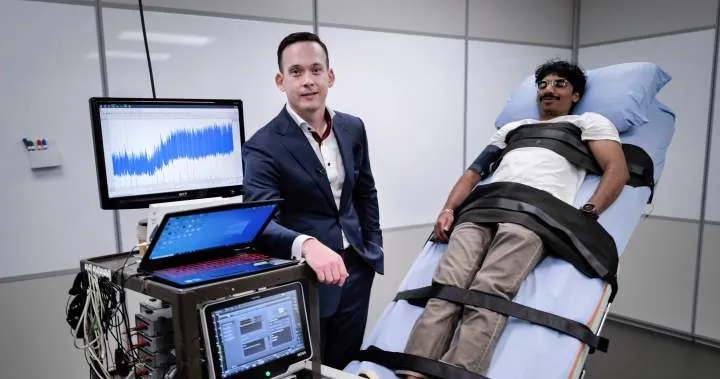
Revolutionary Implant Promises to Stabilize Blood Pressure for Spinal Cord Injury Patients
2025-09-17
Author: Benjamin
A Life-Altering Innovation for Spinal Cord Injury Patients
Cody Krebs, a 32-year-old from Didsbury, Alberta, has faced numerous hurdles since a devastating spinal cord injury left him wheelchair-bound three years ago. Little did he know that this injury would lead to an unpredictable battle with his blood pressure, turning simple tasks into near-catastrophes.
"Before the accident, I had no idea how volatile blood pressure can be. Just transferring from my bed to my chair almost knocked me out at times when my blood pressure would drop," Krebs recounted.
Cutting-Edge Research at the University of Calgary
Now, Krebs is part of groundbreaking research at the University of Calgary, which has revealed a promising new implant designed to stabilize blood pressure in those suffering from spinal cord injuries. This research has garnered international recognition, with studies co-published in the prestigious journals Nature and Nature Medicine.
Collaborating with institutions in Switzerland and the Netherlands, the Cumming School of Medicine is at the forefront of developing a targeted therapy tested on 14 participants across four clinical studies.
Understanding the Impact of Blood Pressure Regulation
According to Aaron Phillips, an associate dean at the university, spinal cord injuries disrupt the brain's ability to regulate blood pressure, which can lead to debilitating symptoms such as fainting spells and fatigue. Conversely, elevated blood pressure poses risks like strokes.
"These studies illustrate the struggles faced by individuals with spinal cord injuries regarding both low and high blood pressure, and our treatment is designed to address both extremes," Phillips explained.
How the Implant Works: A Game-Changer in Treatment
The implant functions similarly to a cardiac pacemaker, offering electrical stimulation to the spinal cord to restore communication pathways between the nervous system and the brain. After a spinal cord injury, these crucial connections are often severed.
Dr. Fady Girgis, a neurosurgeon and associate professor, described the surgery as straightforward, with outcomes that could be life-changing for many patients.
A Bright Future Ahead
"Significant swings in blood pressure can be debilitating. Patients report feeling much better, and their quality of life dramatically improves after the procedure," Dr. Girgis noted.
Excitingly, government approval has now paved the way for a pivotal trial of this innovative therapy across approximately 20 neurorehabilitation and neurosurgical centers in Canada, Europe, and the United States. For individuals like Cody Krebs, this research could mark the dawn of a new era in spinal cord injury treatment—one that stabilizes their health and restores hope.









 Brasil (PT)
Brasil (PT)
 Canada (EN)
Canada (EN)
 Chile (ES)
Chile (ES)
 Česko (CS)
Česko (CS)
 대한민국 (KO)
대한민국 (KO)
 España (ES)
España (ES)
 France (FR)
France (FR)
 Hong Kong (EN)
Hong Kong (EN)
 Italia (IT)
Italia (IT)
 日本 (JA)
日本 (JA)
 Magyarország (HU)
Magyarország (HU)
 Norge (NO)
Norge (NO)
 Polska (PL)
Polska (PL)
 Schweiz (DE)
Schweiz (DE)
 Singapore (EN)
Singapore (EN)
 Sverige (SV)
Sverige (SV)
 Suomi (FI)
Suomi (FI)
 Türkiye (TR)
Türkiye (TR)
 الإمارات العربية المتحدة (AR)
الإمارات العربية المتحدة (AR)